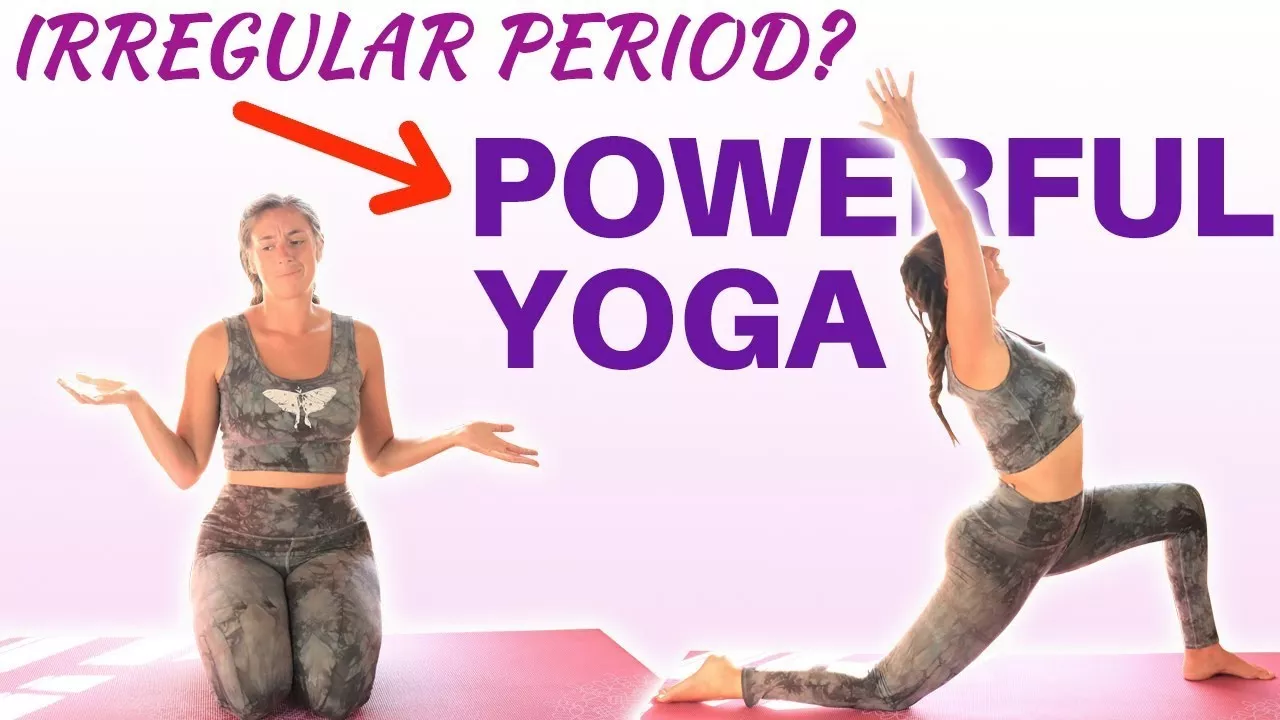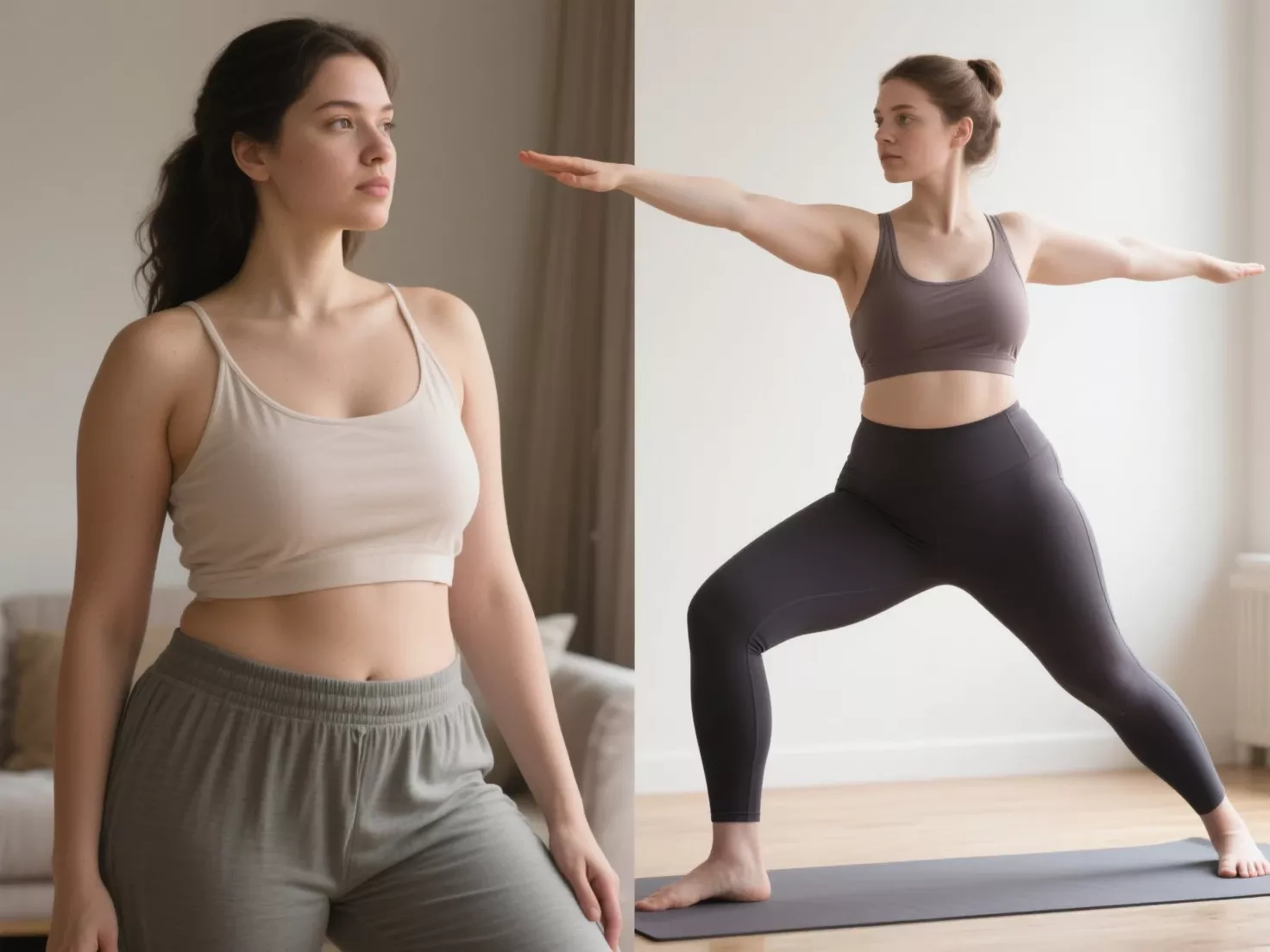Yoga is widely recognized for its benefits to physical and mental health, including stress reduction, hormonal balance, and improved circulation.
However, there is often confusion about whether yoga can delay menstruation.
The short answer is: yoga does not inherently delay periods, but certain factors related to yoga and lifestyle may influence your menstrual cycle.

Let’s explore this topic in detail.
How Yoga Affects Menstrual Cycles
1. Regulates Hormonal Imbalances:
- Regular yoga practice is known to help regulate hormones by reducing stress and improving the function of the endocrine system.
Balanced hormones typically support a consistent menstrual cycle, making it unlikely for yoga to directly cause delays.
2. Reduces Stress Levels:
- High levels of stress can disrupt your menstrual cycle by affecting the hypothalamus, a part of the brain that regulates reproductive hormones.
Yoga helps lower cortisol (the stress hormone), promoting regular cycles rather than delays.
3. Physical Strain and Intense Yoga:
- While gentle yoga poses and routines support regular menstruation, intense or excessive yoga practices might contribute to delayed periods.
High-intensity exercise, including dynamic yoga styles like Power Yoga or Hot Yoga, can strain the body and affect ovulation.
This is particularly true for individuals who are underweight or already experiencing irregular cycles.
4. Body Weight and Fatigue:
- Yoga, combined with a calorie deficit or over-exercising, may lead to a drop in body fat.
Low body fat levels can disrupt estrogen production, potentially causing irregular or delayed periods.
Possible Reasons Yoga May Appear to Delay Periods

1. Lifestyle Changes:
- Starting a new yoga practice may coincide with changes in diet, sleep, or stress levels, all of which can affect your menstrual cycle.
- If you’re practicing yoga for several hours a day or adopting a restrictive diet, these changes may impact hormone levels.
2. Underlying Medical Conditions:
- Conditions like Polycystic Ovary Syndrome (PCOS) or thyroid imbalances can delay periods, and these conditions might coincide with your yoga practice.
Yoga itself isn’t the cause, but it might not immediately regulate cycles affected by medical issues.
3. Impact of Intense Practices:
- Styles such as Ashtanga Yoga or Vinyasa Flow require significant physical exertion, similar to cardio workouts.
If performed excessively, these practices might disrupt the hypothalamus-pituitary-ovarian axis, delaying ovulation and, consequently, menstruation.
Can Yoga Help Regulate Irregular Periods?
Yoga can be a supportive practice for improving menstrual health. Certain yoga poses and sequences are specifically known to:
1. Reduce Stress and Anxiety:
- Restorative poses and mindful breathing lower cortisol levels, helping regulate menstrual cycles disrupted by stress.
2. Support Hormonal Balance:
- Regular yoga practice improves circulation to the pelvic region and supports endocrine system function, helping balance estrogen and progesterone levels.
3. Improve Blood Flow to the Reproductive Organs:
- Gentle yoga sequences that stretch the abdominal and pelvic regions can enhance blood flow, supporting healthy uterine function and regular menstruation.
Yoga Poses That May Support Menstrual Regularity
Certain yoga poses can play a crucial role in regulating menstrual cycles by promoting hormonal balance, improving blood flow to the reproductive organs, and reducing stress.
Below is a detailed explanation of effective yoga poses that may help support menstrual regularity, along with instructions on how to perform them safely:
1. Bound Angle Pose (Baddha Konasana)

Why It Helps:
This hip-opening pose increases circulation to the pelvic area and helps stretch the inner thighs, reducing tension in the hips and lower abdomen.
It supports reproductive health by relaxing the pelvic muscles and promoting hormonal balance.
How to Do It:
- Sit on the floor with your legs extended.
- Bend your knees and bring the soles of your feet together, allowing your knees to fall open like a butterfly.
- Hold your feet or ankles with your hands and sit tall, elongating your spine.
- For a deeper stretch, gently press your elbows on your knees or lean forward slightly.
- Hold the pose for 1–2 minutes while taking slow, deep breaths.
Tips:
- Use a cushion or block under your hips if your pelvis feels tight.
- Avoid forcing your knees down—let them open naturally.
2. Child’s Pose (Balasana)

Why It Helps:
A calming and restorative pose, Child’s Pose helps relieve tension in the lower back and abdomen, which can support proper blood flow to the reproductive organs.
This pose also soothes the nervous system, promoting hormonal balance.
How to Do It:
- Start in a kneeling position with your knees wide apart and your big toes touching.
- Sit back on your heels and extend your arms forward, lowering your torso onto your thighs.
- Rest your forehead on the floor or a cushion.
- Hold the pose for 1–2 minutes, focusing on your breath.
Tips:
- Place a bolster or pillow under your torso for extra support.
- Keep your arms extended or rest them along your sides if that feels more comfortable.
3. Bridge Pose (Setu Bandhasana)

Why It Helps:
Bridge Pose stimulates the reproductive organs and improves circulation to the pelvis, supporting hormonal function and menstrual regularity.
It also strengthens the lower back and stretches the front of the body, relieving tension in the abdominal area.
How to Do It:
- Lie on your back with your knees bent and your feet hip-width apart, flat on the floor.
- Place your arms by your sides, palms facing down.
- Press into your feet and lift your hips toward the ceiling, forming a straight line from your shoulders to your knees.
- Hold the pose for 20–30 seconds, then slowly lower your hips back to the floor.
Tips:
- Place a yoga block or cushion under your sacrum for a supported variation.
- Avoid overextending your back—keep the lift controlled and comfortable.
4. Legs-Up-The-Wall Pose (Viparita Karani)

Why It Helps:
This pose is excellent for improving circulation to the pelvic area and relaxing the nervous system.
It promotes relaxation, reduces stress-induced menstrual irregularities, and helps alleviate bloating and fatigue.
How to Do It:
- Sit sideways next to a wall, then lie back and swing your legs up so they rest vertically against the wall.
- Adjust your position so your hips are close to the wall, and your legs feel comfortably supported.
- Rest your arms by your sides or place your hands on your belly.
- Hold the pose for 5–10 minutes, focusing on deep, slow breathing.
Tips:
- Use a bolster or cushion under your hips for extra comfort.
- If your hamstrings feel tight, move slightly away from the wall to reduce the stretch.
5. Reclining Butterfly Pose (Supta Baddha Konasana)

Why It Helps:
A reclined version of the Bound Angle Pose, this pose opens the hips, improves blood flow to the pelvic region, and encourages deep relaxation.
It’s particularly effective for calming the nervous system and reducing stress.
How to Do It:
- Lie on your back and bring the soles of your feet together, letting your knees drop outward.
- Place a bolster or pillow under your back for support, allowing your chest to open naturally.
- Rest your arms by your sides or place your hands on your abdomen.
- Hold the pose for 5–10 minutes, focusing on relaxed, deep breathing.
Tips:
- Use cushions under your knees for added support if you feel tightness in your hips.
- Close your eyes and practice mindfulness or meditation while in this pose.
6. Supine Twist (Supta Matsyendrasana)

Why It Helps:
A gentle twisting pose, this helps release tension in the lower back and abdomen, promoting circulation to the reproductive organs.
It also aids digestion, which can be beneficial for reducing bloating.
How to Do It:
- Lie on your back with your legs extended.
- Draw your right knee toward your chest and extend your right arm out to the side.
- Use your left hand to guide your right knee across your body, allowing it to rest on the floor or a cushion.
- Turn your head to the right and hold the pose for 1–2 minutes.
- Switch sides and repeat.
Tips:
- Use a pillow under your knee if it doesn’t reach the floor.
- Keep the twist gentle and avoid forcing your body into the pose.
Incorporating These Poses Into Your Routine
To support menstrual regularity, aim to practice these poses 3–4 times a week, focusing on gentle movements and mindful breathing.
Combine them with stress-reducing techniques like meditation or pranayama for added hormonal balance.
Remember, consistency is key. Over time, these yoga poses can help your body regulate its natural rhythms, promote relaxation, and maintain reproductive health.
When Should You Be Concerned About Delayed Periods?
While yoga alone is unlikely to delay your period, other factors may be at play. If your period is consistently delayed or irregular, consider the following:
1. Evaluate Lifestyle Factors:
- Are you over-exercising, under-eating, or experiencing high levels of stress? Adjust your routine to include more rest, balanced nutrition, and gentle yoga practices.
2. Monitor for Medical Conditions:
- Conditions like PCOS, thyroid issues, or amenorrhea (absence of menstruation) can cause delays. If irregularities persist, consult a healthcare professional for evaluation.
3. Track Your Cycle:
- Use a period tracker app to monitor changes in your cycle and identify potential triggers, such as stress, diet changes, or exercise routines.
Conclusion
Yoga, in itself, is unlikely to delay periods and is more commonly associated with promoting menstrual regularity and hormonal balance.
However, over-exertion or drastic lifestyle changes related to yoga might influence your cycle. If you notice consistent delays, it’s essential to examine other factors like stress, nutrition, and overall health.
For a balanced approach, incorporate gentle, restorative yoga practices and prioritize listening to your body’s needs.
If you’re concerned about irregularities, seek advice from a healthcare professional to rule out any underlying conditions.



